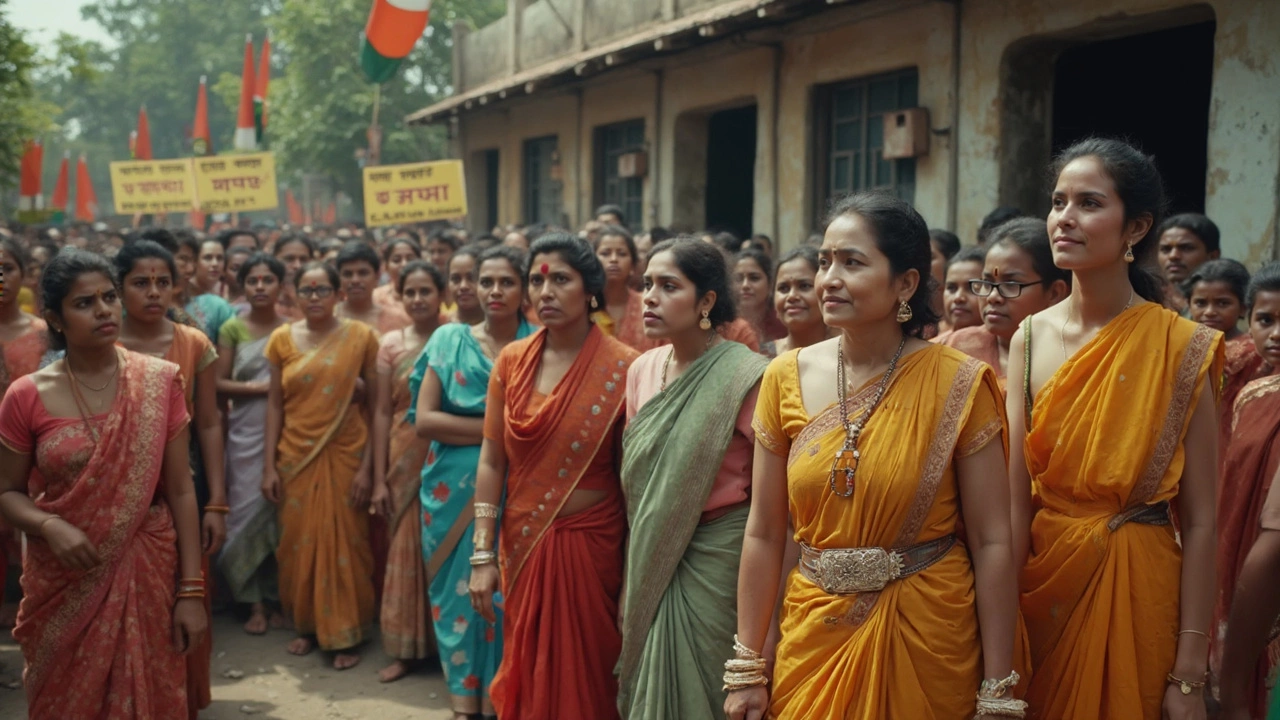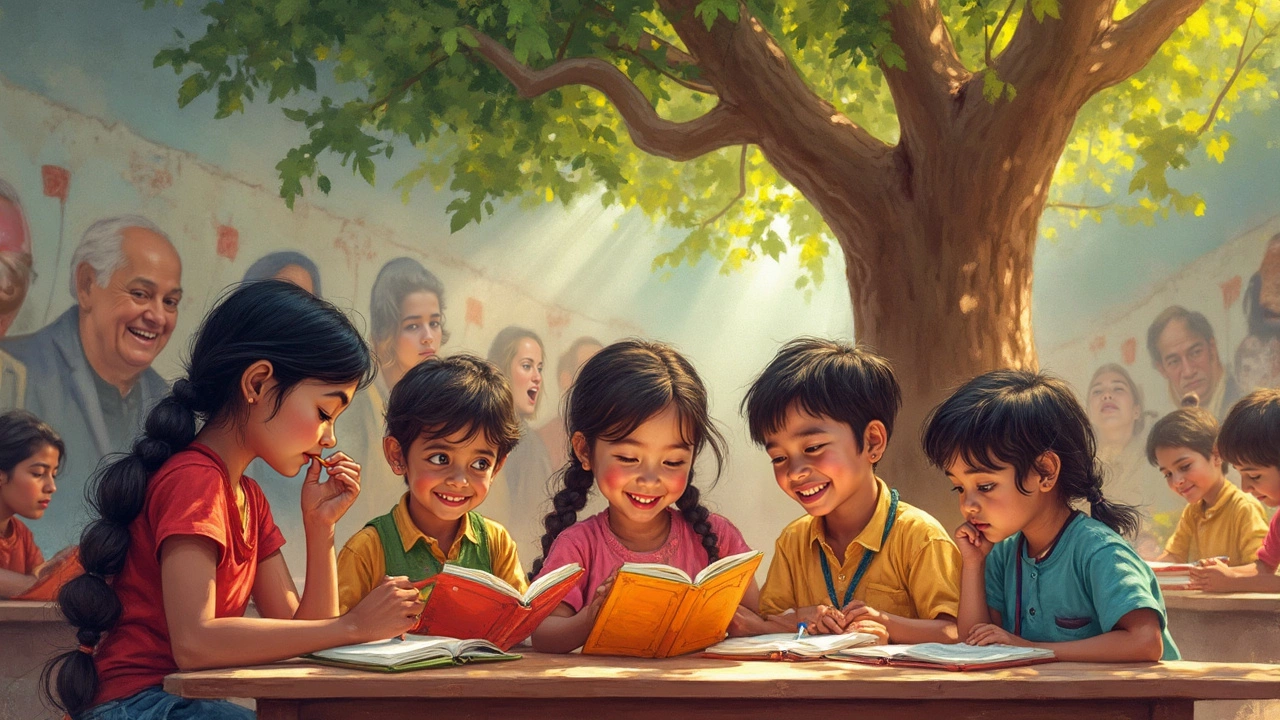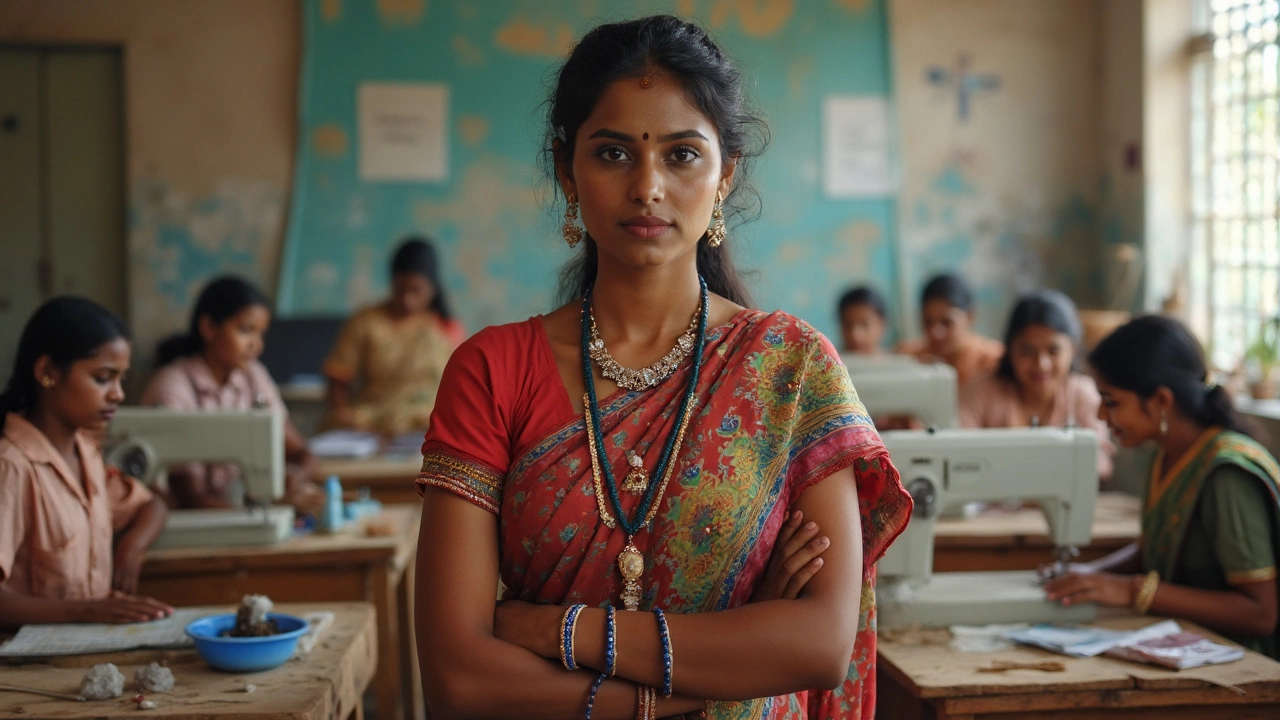Picture going to school, but knowing your dreams won’t matter because of how much your family earns, where you’re born, or even the color of your skin. That punch-in-the-gut unfairness isn’t just a thing of the past—it’s still with us. But long before hashtags and social media, some gutsy rebels said it out loud: education is empty unless equality comes with it. Their words weren’t just classroom posters. Their ideas sparked revolutions and rewrote entire systems. Ever wondered who started this fight—and what their vision really meant?
Fierce Voices: The Rebels Who Connected Education and Equality
When you think of heavy hitters who argued that education has no point without equality, a few names practically shout from history’s rooftops. Paulo Freire, for starters, didn’t just write dense books—he gave a whole movement its heart. His hit book "Pedagogy of the Oppressed" (published in 1968 but catching fire worldwide in the 1970s) said oppressed people could only truly learn if their education recognized their struggles and fought alongside them. Freire was blunt: teaching isn't just dumping facts into empty heads. He believed learning means nothing unless students see themselves as equals—worthy, capable, respected.
Now, Freire wasn’t alone. In America, the legacy of Mary McLeod Bethune echoes every time someone argues for equal funding for schools. Bethune, born in 1875 to former slaves in South Carolina, once said, “The whole world opened to me when I learned to read.” But she didn’t stop there. She built a school for Black girls in Florida with five students and a buck-fifty to her name. Why? Because she saw—up close—that knowledge alone didn’t free anyone unless everyone had the same shot at it. She fought for teacher pay equality and founded the National Council of Negro Women. She’s proof that believing in equal education wasn’t just talk. It meant rolling up your sleeves and facing down lawmakers—sometimes literally.
Farther east, India’s Savitribai Phule was opening classroom doors wide (and sometimes dodging rotten eggs thrown by angry mobs). Back in the 1840s, she and her husband dared to teach girls and those labeled “untouchable.” Savitribai didn’t mince words: education is a right—a leveler. Her schools and ink-stained saris still fire up activists fighting caste discrimination in Indian education today.
Don’t forget Dr. Martin Luther King, Jr. Either. In his 1947 essay "The Purpose of Education," he called out the difference between intelligence and character. A degree, he insisted, means little unless it breaks down barriers in society. By the 1960s, King’s "Poor People’s Campaign" argued schools had to lift everyone. Decades later, those ideas remain the backbone of civil rights education policy.
What ties these icons together? They didn’t push for more tests or nicer classrooms. They wanted the system to change shape—to include everyone, not just the lucky or wealthy. They showed you can’t have true learning without justice as the foundation.
From Words to Action: How the Fight for Equal Education Changed the Rules
So, these rebels had big dreams. But did all the talk actually change anything? Turns out, their ideas sent shockwaves through real classrooms—sometimes overnight, sometimes over decades.
After Freire’s work was translated from Portuguese to English, his direct approach inspired teachers to ditch the “banking model.” No more droning on from the chalkboard. Instead, classrooms started flipping into spaces for open conversation. In Brazil, his methods got adults reading quickly—often after years of being shut out by poverty. His process spread to school reforms in Africa, Asia, and beyond in the 1970s and ’80s. Even today, when schools try ‘critical pedagogy,’ that’s Freire’s DNA in action: teaching students to question power and find their voice.
In the United States, the Civil Rights Movement picked up the torch. When Brown v. Board of Education hit the Supreme Court in 1954, justices finally agreed with what Black parents had been saying for decades: separate isn’t equal, and education locked behind color lines is doomed from the start. The ruling forced school districts to open seats to every child. It was ugly and slow—think jeering mobs at Little Rock Central High or federal marshals escorting Ruby Bridges past furious crowds in New Orleans. But numbers paint the change. In 1955, less than 1% of Black children in the Deep South attended integrated schools. By 1970? Around 33% did. Progress wasn’t perfect, but it was undeniable.
Here’s a snapshot of the era’s progress:
| Year | % of Black Students in Integrated Southern Schools |
|---|---|
| 1955 | <1% |
| 1964 | 2% |
| 1970 | 33% |
Across the Atlantic, policies began shifting in the UK during the 1960s and 1970s. Comprehensive schools aimed to break down class barriers. Instead of kids being sorted into elite grammar schools or left behind, local schools opened doors to everyone, hoping to level that playing field. The results still get debated in pubs and parliaments, but there’s no denying those reforms changed who got a shot at ‘the good life.’
In India, Savitribai’s vision finally took root after independence. The Right to Education Act of 2009 required free and compulsory education for all children aged 6 to 14. It’s not perfect—kids from wealthy families often leapfrog ahead, but millions who used to miss out are now enrolled.
Again and again, you see the same headline: bold ideas about equality reshaped what schools could mean. They forced governments to ask—who’s being left out, and what are we going to do about it?

Equality in School Means More Than Test Scores
Lots of folks think equality in education just means everyone gets the same textbook or sits in a shiny new classroom. In reality, true equality digs much deeper. It means tackling the root stuff—money, language, food, disability, families barely scraping by. Think of those stories that still surface—kids skipping class because they’re hungry or missing free lunches because of confusing paperwork. Most of the world’s underprivileged children don’t just need knowledge. They need real chances.
Modern studies drive this point home. The OECD’s PISA reports reveal a stubborn pattern: in almost every wealthy country, students from poor families are far less likely to go to top universities. And get this—an official 2022 UN report found that, in 48 countries, children from the richest 20% were up to four times more likely to finish secondary school than those from the poorest 20%.
Here’s the kicker: schools that actively close the gap—by giving extra help where it’s needed most—see the biggest leaps in student results. In Finland, for example, students who fall behind don’t just get pushed through. Teachers work with small groups, and the country spends more per student on those who struggle. Their system isn’t magic: it's laser-focused on giving everyone a fair shot, and it pays off. Finland regularly ranks near the top on worldwide education charts.
What about issues beyond money? In the UK, the Equality Act of 2010 pushed schools to make sure disability, gender, and religion couldn’t be reasons to deny anyone a place at the table. Real equality means considering who gets bullied, who goes unseen, and who might need a different approach to learn best. Some schools now use peer-mentoring and provide learning assistants for kids with autism or speech issues. Research shows that hands-on support doesn’t just help the child being helped—it opens up empathy and understanding for the whole class.
When you really pull back the curtain, one thing is clear: meaningful education means demolishing every barrier, not just a few obvious ones.
Making Equality Real: Tips and Lessons from the Ground
So where does all this leave us? You’ve got bold ideas from history, teachers willing to stick their necks out, and a world that still throws up walls. But this isn’t a lost battle. The real lessons come from the ground—from teachers, students, and parents who live this stuff every day.
If you’re a parent, start by getting curious. Is your child’s school treating every kid’s background as an asset, not a hurdle? Try these tips:
- Show up at school meetings. Ask pointed questions about how students from different groups are doing and what's being done to help those struggling.
- Team up with other parents to push for after-school programs and free lunches. Schools respond to organized voices.
For teachers, try swapping out lectures for group projects that mix up students from different backgrounds. If language is a barrier, lean on visual aids or bilingual volunteers. Small changes—like reading stories from diverse cultures or letting students share their lives—let every kid see themselves reflected in the classroom.
Policymakers? There’s no shortcut around the hard numbers. Focus school funding where it’s needed most—research shows that every extra dollar put toward disadvantaged students gets the biggest return. And keep measuring—not to shame or sort, but to fix what’s failing.
- Push for laws that guarantee accessibility for students with disabilities.
- Invest in teacher training so staff understand unconscious bias—everyone has it, but it shouldn’t decide a child’s future.
If you want a dose of hope, look at South Korea. Just 60 years ago, the country had brutal poverty and almost no girls in secondary schools. Today? More than 95% of teenagers finish high school, girls and boys side-by-side, thanks to a national commitment to giving everyone the same shot.
The bottom line: when you hear “education is meaningless without equality,” know there’s a world of tough, bold, and inspiring history behind it—and the fight’s not over. Every time a child is treated as fully human and their potential is taken seriously, those rebels from history win another round.


